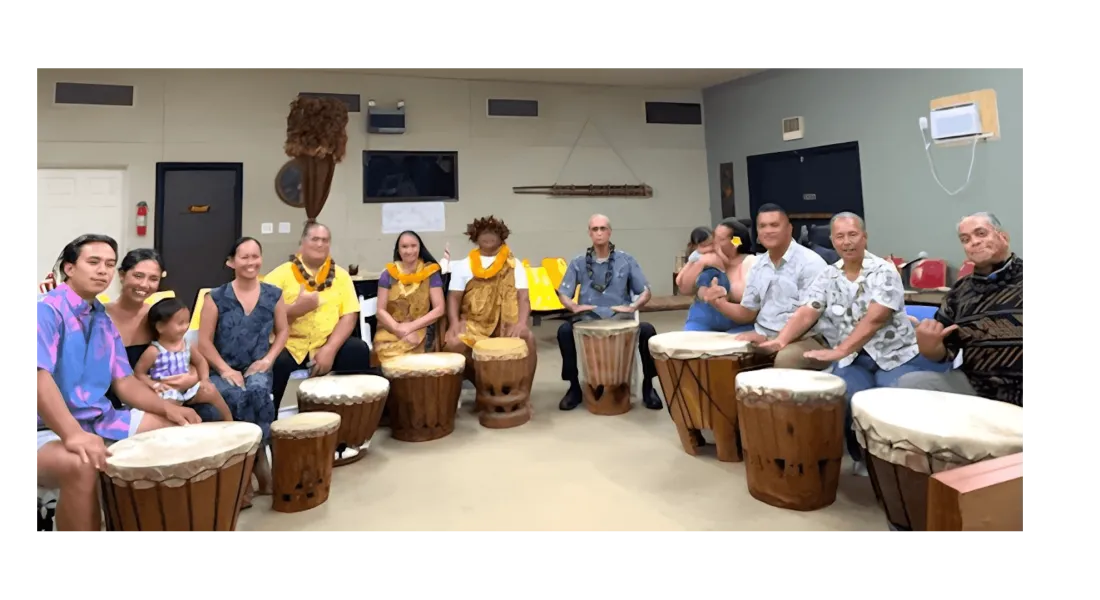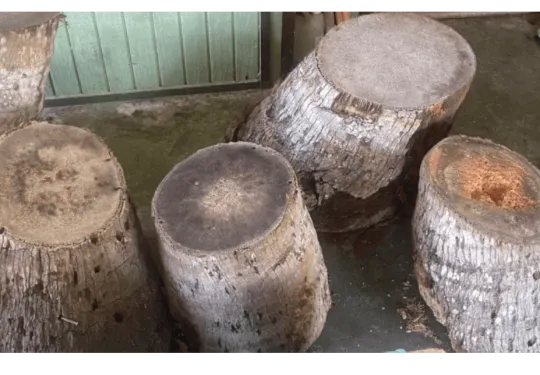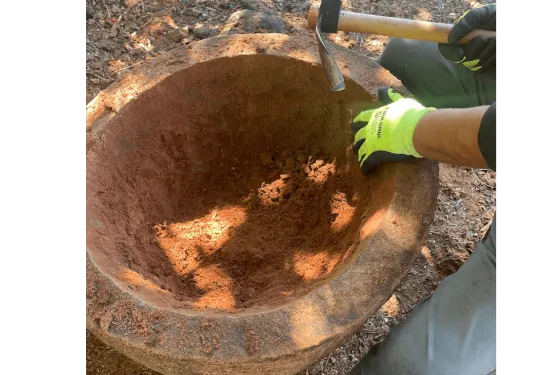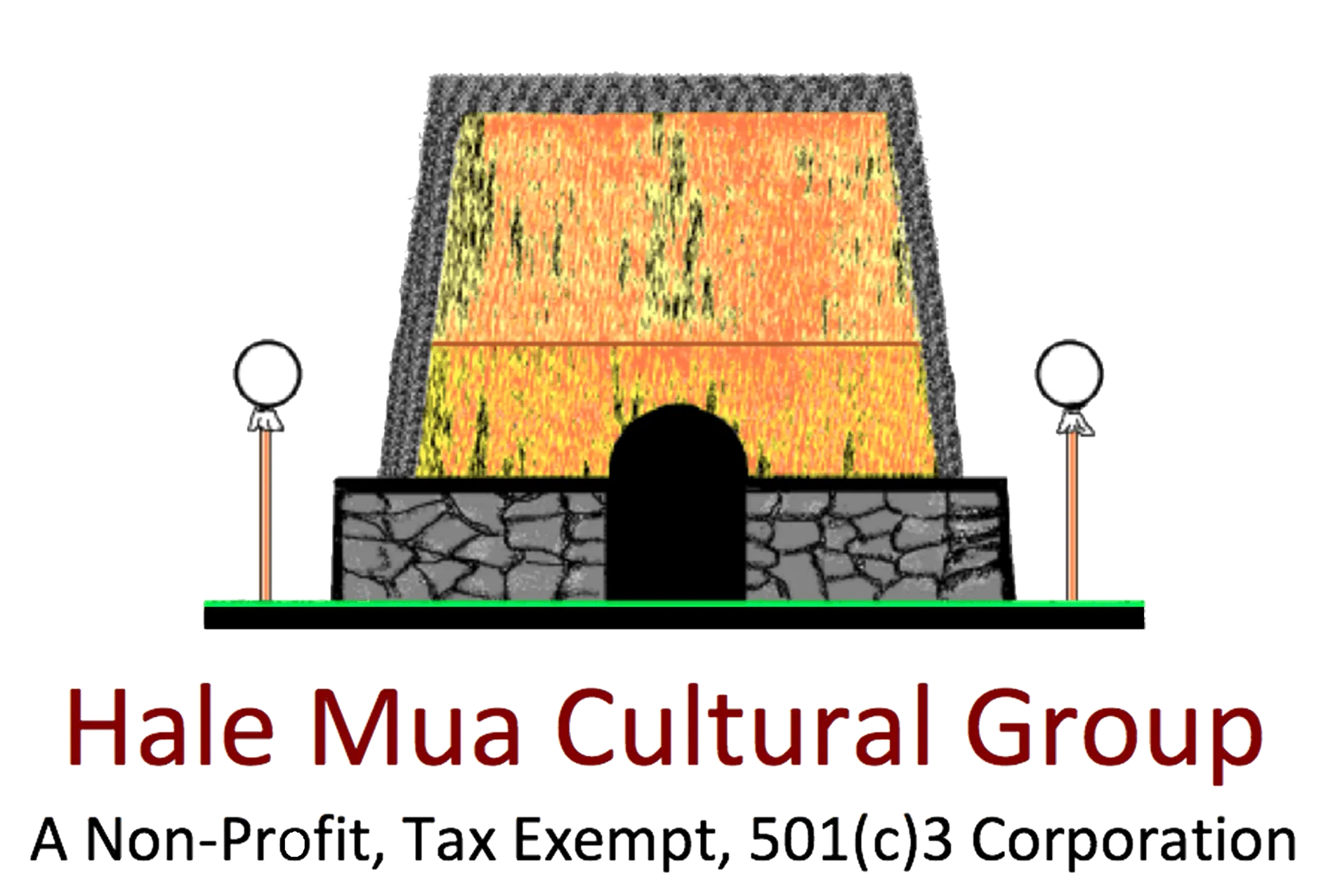
Pahu Making Cohort - Hui ʻEkahi ma Keauhou, Moku o Keawe
Start Date: October 4, 2023
Completion Date: February 3, 2024
Celebrate the success of our recent Hawaiian Pahu Making cohort! This blog post will take you back through the process, from selecting the raw materials to adding the final touches, as we explore the rich cultural significance of the pahu drum.

Dried Out Laʻau Niu
Step 1: The Foundation - Stump Debarking
Our journey begins with the selection of a suitable hardwood stump, typically milo or coconut wood, known for its resonance. Debarking is not just a physical task; it is a symbolic gesture of uncovering potential, peeling away layers to reveal the drum's essence. Using traditional adzes and modern tools alike, participants will learn the delicate art of removing bark without harming the wood beneath. This process is meditative, allowing participants to connect with the spirit of the wood.
Step 2: Hollowing Out - Creating the Voice
Once debarked, the next step is hollowing out the stump. This is where the pahu drum starts to find its voice. Under the guidance of skilled artisans, attendees will use chisels and gouges to carve out the drum's interior. This critical step influences the drum's acoustics, requiring patience and precision. It's a transformative process that demands respect for the material and an understanding of the sound it will eventually produce.

Chiseling Out the Coconut Stump
ʻŌlelo Noʻeau:
"He lawaiʻa no ke kai papaʻu, he pōkole ke aho; he lawaiʻa no ke kai hohonu he loa ke aho."
"A fisherman of the shallow sea uses only a short line; a fisherman of the deep sea has a long line."
This ʻōlelo noʻeau speaks to the depth of commitment and skill required in any endeavor—a fitting reminder as we delve into the rich tradition of pahu making.
